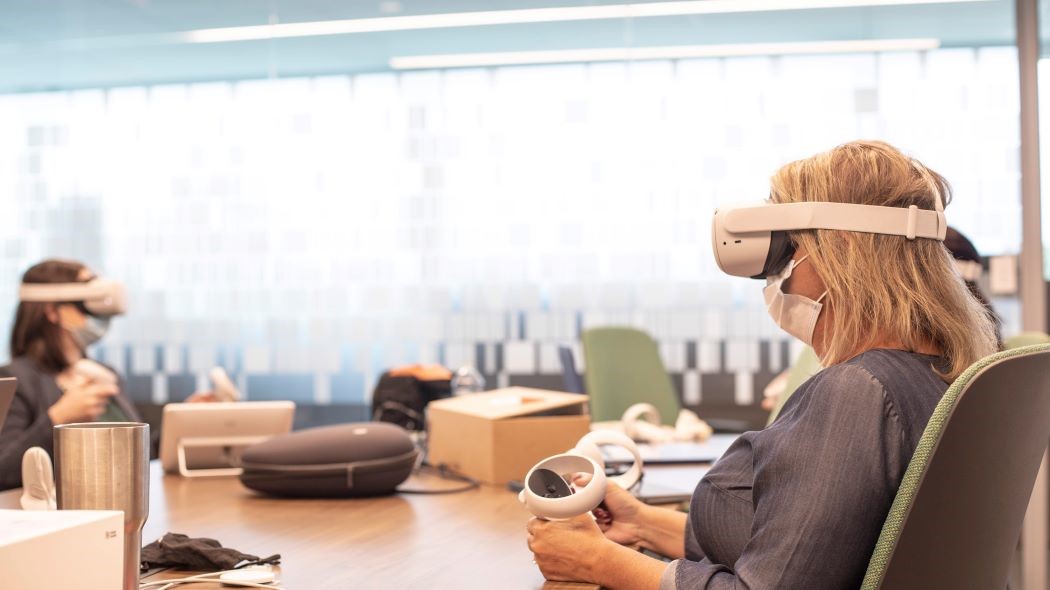
In just 18 months, the COVID-19 pandemic has changed everything about life as we know it, including what employees have come to expect from their employers.
 "We used to have a certain amount of predictability in terms of our work and our home lives prior to COVID-19,” said Cindy Ryan, chief human resources officer at Cigna. “Now there is this prevailing uncertainty, especially with the variants. And so here we are, 18 months later, and many people are still working from home.”
"We used to have a certain amount of predictability in terms of our work and our home lives prior to COVID-19,” said Cindy Ryan, chief human resources officer at Cigna. “Now there is this prevailing uncertainty, especially with the variants. And so here we are, 18 months later, and many people are still working from home.”
While digital technology has proven that businesses can still effectively run their operations with employees working from home, remote work does have its challenges. People miss the personal connections and the ability to collaborate shoulder-to-shoulder with colleagues, which just can’t be replicated at home.
With many organizations now opening the doors of their offices for the first time in over a year, finding that sweet spot in creating personal connections, and enabling teams to collaborate in a hybrid workplace is one of the most significant challenges organizations need to overcome.
“Employees expect companies to not just treat them as employees, but as people,” Ryan said. “We need to get better at helping employees stay well both in a work environment and in their personal lives. It’s going to take transparency, empathy and understanding from the leadership level, down, which is a distinct change from how many leaders were taught to lead. Companies will need to respond and react to employee needs in ways that they haven’t before.”
Indeed, businesses have to get more comfortable with talking to their people about topics like race and social injustice, mental health, family issues and more. This means that leadership must lead differently, and some may not have those skills inherently. It’ll be on employers to help them get there.
Employee Well-being and Experience as a C-Suite Imperative
In the in-person work environment it was easier to keep work and life separate. But because the two are so blended today, there’s greater awareness around the fact that a healthy workforce is really critical to business success. Research has found that a focus on employee well-being can help companies lower their overall health-related costs by up to 62%. And, a focus on well-being in the workforce increases business productivity and overall economic prosperity as well.
Employee well-being and employee experience have broadened from just HR topics to a C-suite imperative because business trends follow consumer trends. COVID has caused many people to stop and think about what is really important to them in life. This has resulted in people quite literally leaving their jobs for more money, more flexibility, or to have more time to spend with family and loved ones. Data shows that a record 4 million people quit their jobs in April 2021 alone. The moral of the story: Companies that don’t prioritize employee health and well-being will have a hard time attracting and retaining top talent.
“People are questioning their purpose in life and that is having an impact and driving this shift in priorities across companies and departments,” Ryan said.
Ryan also noted that if anything good has come out of COVID-19 it’s that mental health is getting attention and moving to the forefront. At Cigna, because of the nature of our business and the fact that we are a key player in the health care industry, we’ve always paid special attention to mental health as part of our whole-person health strategy. But this notion is now garnering attention from outside of the industry as well.
Technology companies, retail, CPG—you name it—are all rallying around the importance of employee mental health. There’s broader awareness that employees who are stressed, anxious, or otherwise struggling with mental health issues, also struggle to bring their best selves to work, which impacts both their productivity and the quality of their work.

A Healthy Workforce Leads to Healthy Business Growth
Hear our virtual panel discussion on new research results from The Economist Intelligence Unit (EIU) on the role of workforce well-being and how it can help your business thrive.
Strategies for Fostering a Workplace of Well-being Post-COVID
A lot of the well-being strategies companies had in place prior to the pandemic were focused on well-being in an office. At Cigna, we offer flu shots to employees, for example, which they could get in the office, even if they weren’t working from an office any longer. Now, with many companies encouraging their people to work from home at least part of the time if their job permits it, rethinking how we encourage people to continue to be well, is going to be really important. And, making employees aware of all the different options that are available to them will be crucial.
Flexibility, Ryan believes, is going to be a key driver of healthy workforces. “It’s no longer just about where you work, but about how and when you work,” she explained. “Flexibility is key. If you are a parent whose child is home sick from school, or a caregiver whose mother needs care during the day, you should have the flexibility to take care of your child or your mother and then get work done later in the evening.”
But, she warned, companies must remember that what is important to one employee isn’t necessarily important to another. Companies will need to make sure that their offerings and programs have a wide breadth and depth, so that all employees can get the benefits they need.
“For me it might be helping with childcare, and for someone else it’s pet insurance—we as companies now have to meet all these different needs and there isn’t a one-size-fits-all approach,” Ryan added. “We have to understand our employees as individuals. We have to look at the diversity of our people – generational, ethnicity, socio-economic, and more – and make sure that our programs and offerings honor and value that diversity.”
How Cigna is Approaching the Return to the Office
At Cigna, we are reevaluating when people need to be in the office and what the office is used for. Pre-pandemic we had about 43% of our workforce working remotely full-time. We predict that will grow to 60% full-time remote employees post-pandemic.
We see the office as a place for people to collaborate, and as such we are remodeling parts of Cigna’s headquarters in Connecticut and other office hubs. The idea is to test a few concepts at the headquarters, iterate, and then potentially scale our ideas across our various office locations.
“For this test, the aim is to create more space for collaboration for people that are coming to the office to be together and to work together,” Ryan said. “But we also want to ensure there is space for the folks coming into the office to get away from home and find some quiet space, alone.”
We’re currently testing informal and formal meeting spaces, a lot of soft seating and couches, and more. And according to Ryan, we believe that an “employee-centric approach” to our office space will ensure that the office environment meets people’s needs regardless of why they are coming in.
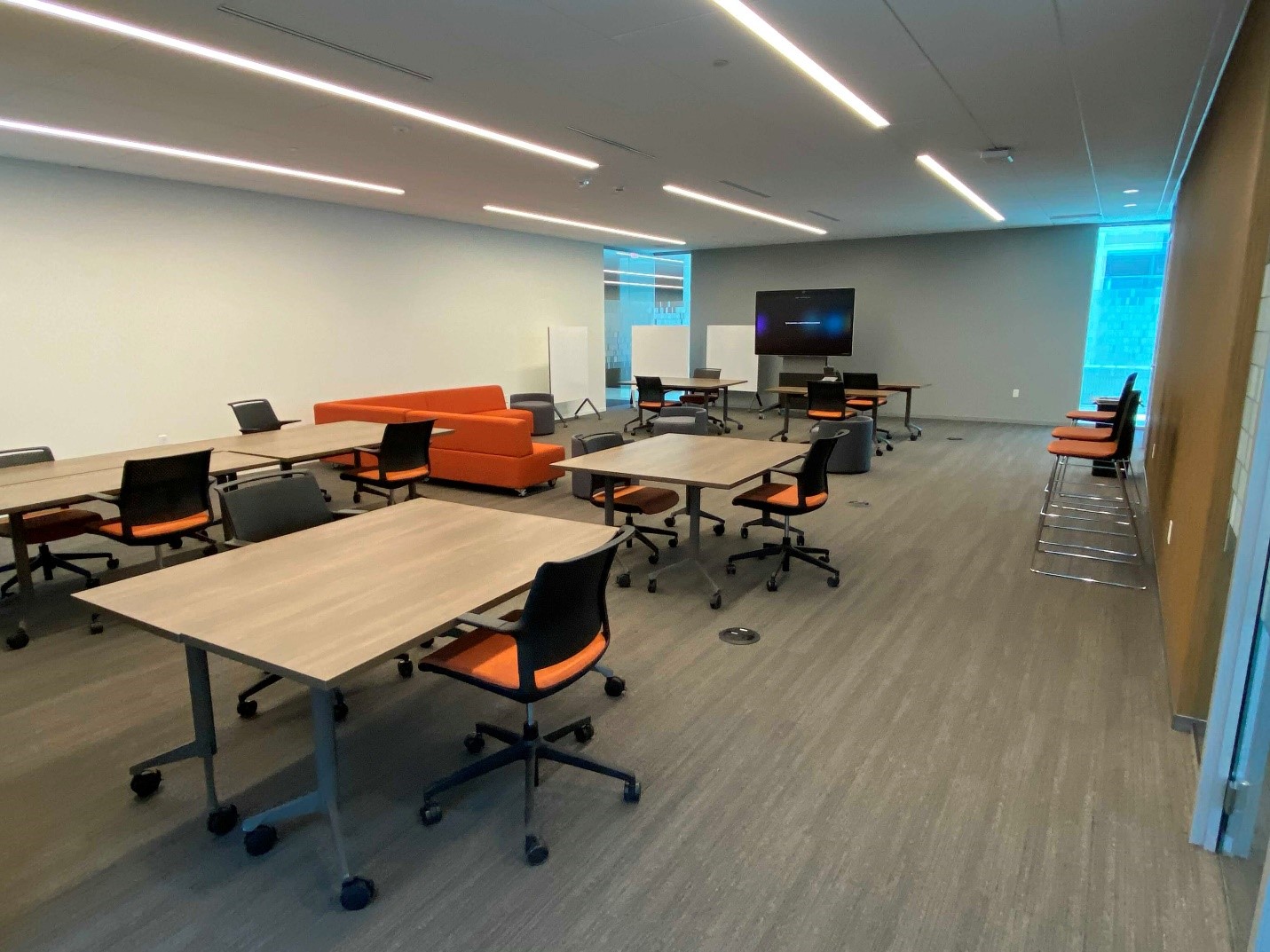
Above: Styled very much like a classroom environment, one of the rooms that has been redesigned in our Connecticut office has a couch, one-on-one meeting spaces and more.
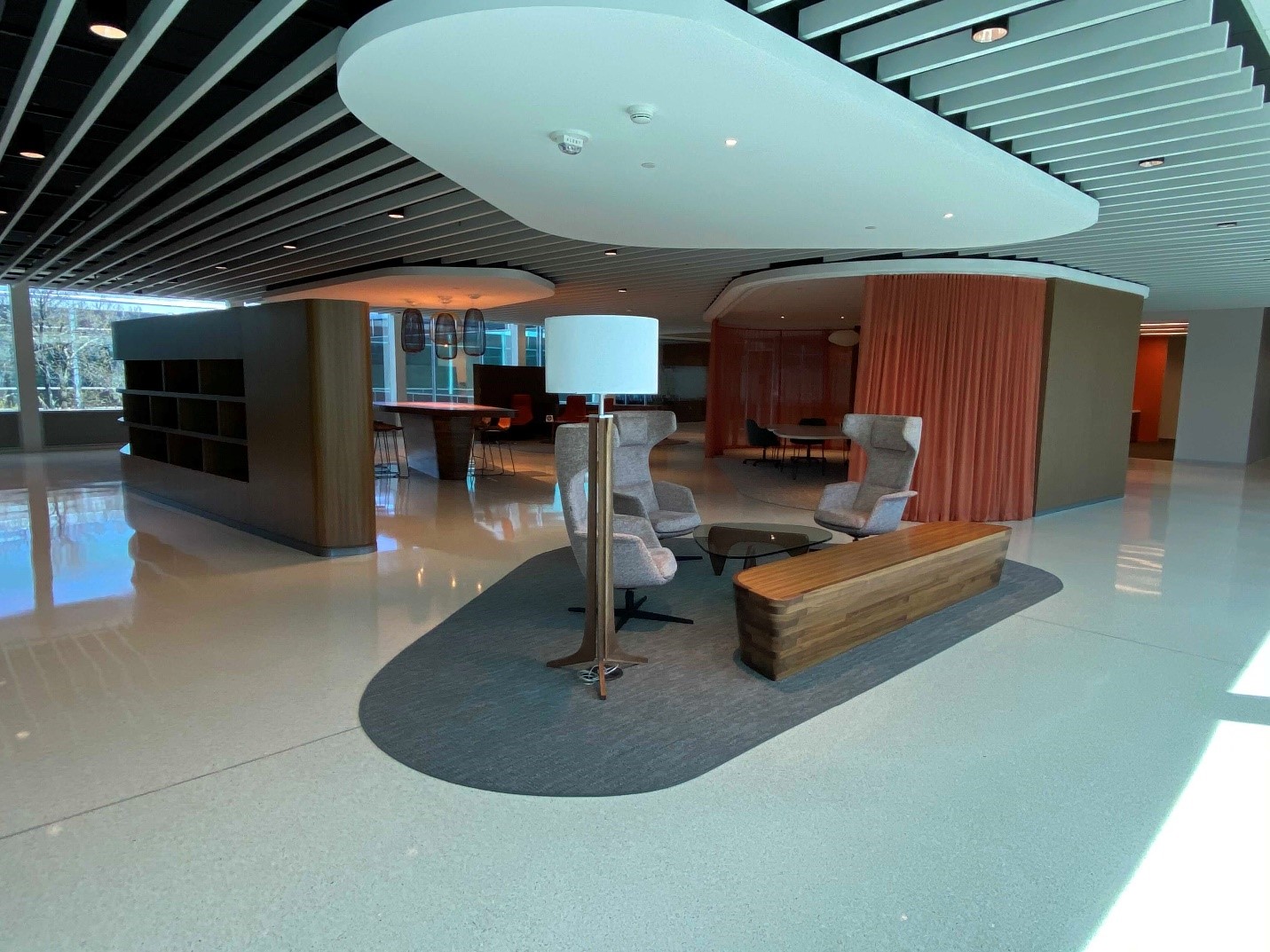
In the meeting space above, employees can get together for a coffee and truly connect.
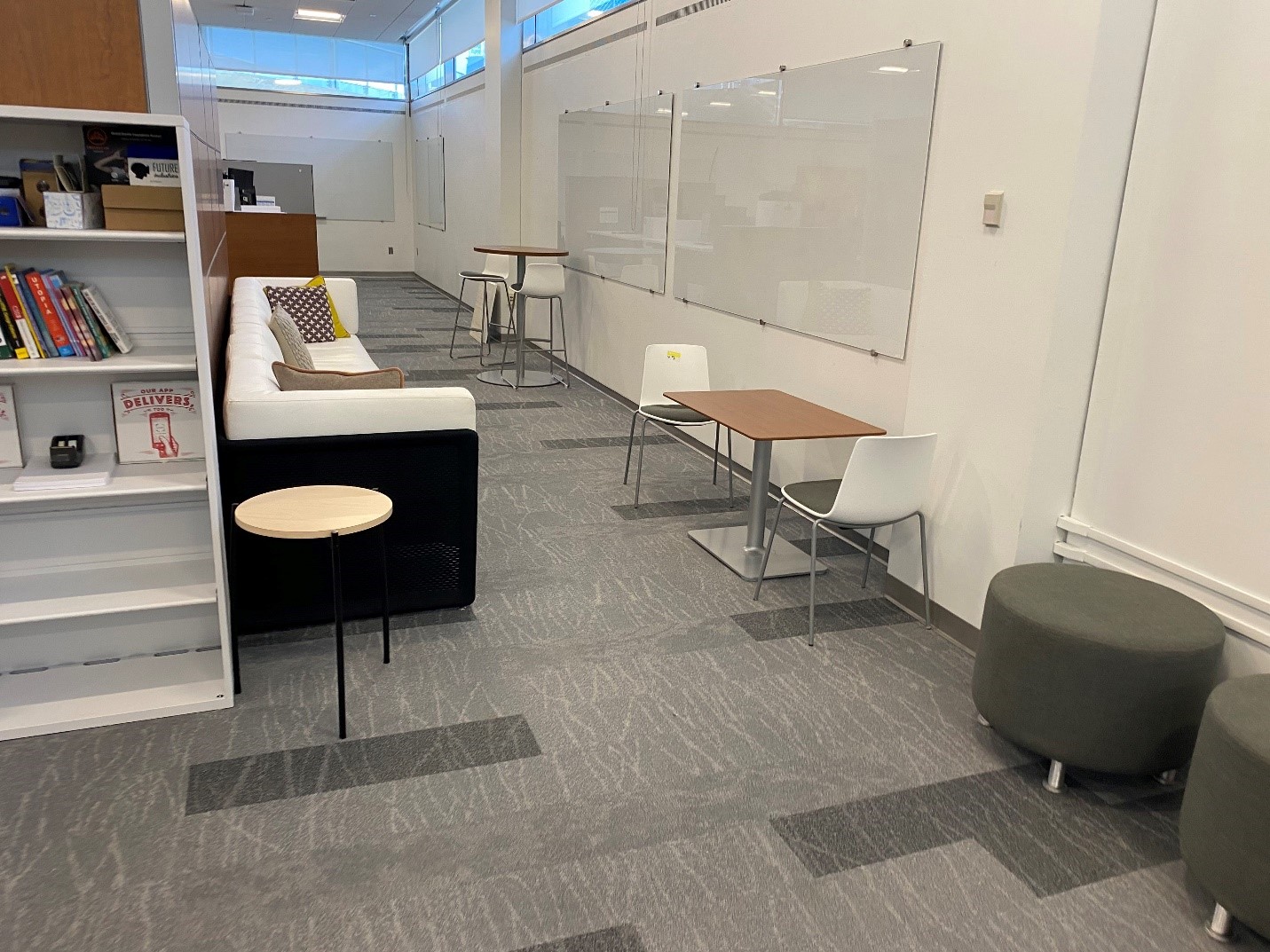
The space above was built specifically for teams looking to collaborate and brainstorm ideas.
From a health and well-being standpoint, Cigna employees can expect less density in the office. People are encouraged to stay 6 feet apart, and there will be a notable shift in people staying home if they are ill.
“There was once a time when you would get a badge of honor for coming into work if you were sick,” Ryan said. “COVID has changed that and will encourage people to work from home or take off altogether on days they aren’t feeling well. To be honest, that approach is well overdue. You shouldn’t be rewarded for working when you’re not well.”
Employee Experience in a Hybrid Workforce
When it comes to employee experience in a hybrid workforce, Ryan says one thing is for sure: It will look different than what it currently looks like, and it will take some testing, learning and innovation to get it right.
Just last week, members of the Cigna team, some of which were working at home, and others who were working in the office, tested out using the Oculus virtual reality headset. “We all felt like we were in the room together, even though we weren’t,” she said. “Now, that’s an extreme example of just some of the ways we are trying to innovate here, but I think that technology is going to be instrumental to giving everyone an equal voice at the ‘table’ regardless of where they work.”
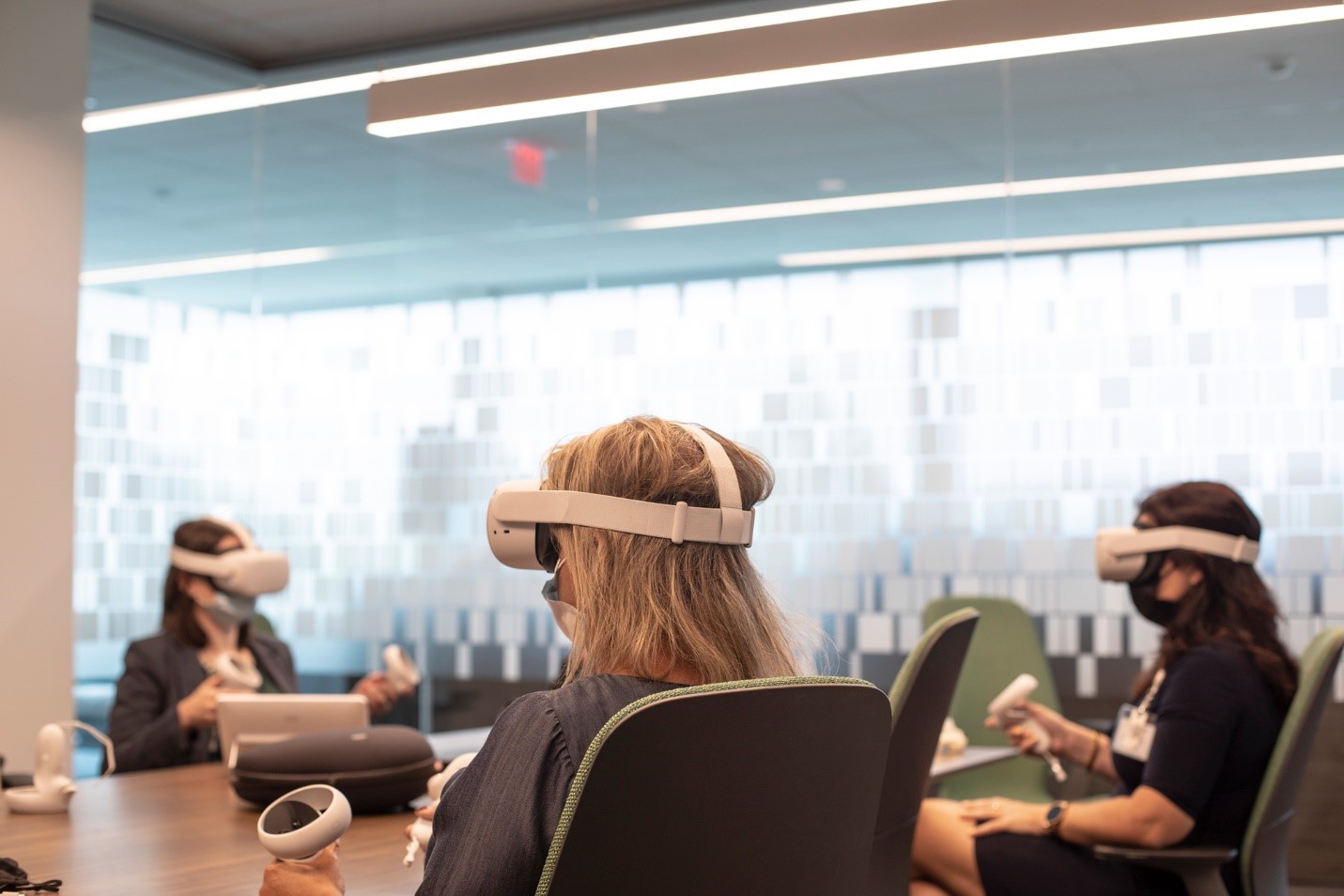
Some of the Cigna team is pictured above testing the Oculus headset for a meeting.
Cigna is also currently looking at how we can update our manager and leader toolkits to make them more mindful of keeping that playing field level—so that all employees have the same opportunities for exposure and to be heard, regardless of where they work.
“We’ll see new technology come to the forefront and we’ll see a lot of experimentation before we can write the rule book for a hybrid workforce,” she added.
Employee Experience and Culture Work Takes on Heightened Meaning in a Hybrid Workplace
Culture, Ryan said, is really interesting because “you can be doing everything right as an organization, but if your culture isn’t right, you’ll fail miserably.” One of the core characteristics of Cigna's culture is the fact that we all care very deeply about each other, our clients, customers, and the communities we serve. But caring is the result of building relationships and personal connections—which is hard in a remote environment.
Now, as more people are getting vaccinated and come into offices, companies must find the “moments that matter.” They’ll need to identify moments when being together will help build relationships and trust.
At Cigna, we believe that being together is going to be really important to foster our culture of caring. We’ll be focusing our efforts to better outline and educate our leadership and management around when work can be done together, but apart vs. when it makes sense to get people into the same room.
Advice to Employers on the Future of Work
Communication and educating teams will be very important as people come back to the office. They’ll need a definition of what hybrid means, what an organization means by flexibility in the workplace, and how to build meaningful connections when not everyone comes to the office every day.
We can’t just go back to doing what we used to do before the pandemic, either, Ryan stressed. Every employee has changed since COVID, and every person has experienced the pandemic differently. There are people who have lost family and loved ones, who are still really afraid to go to the office or to not wear a mask, irrespective of what the policies are. Some people may have underlying health conditions, as well.
Offices are going to look and feel very different to people. Everything’s changed. And from a leadership perspective, companies are going to need a lot of empathy and patience. “Giving everyone time to adjust and re-acclimate to being in an office again is a must,” Ryan said. “And remember: There are still many unknowns, so be sure to take an agile approach to the future of work, fueled by technology, testing, learning and iterating.”